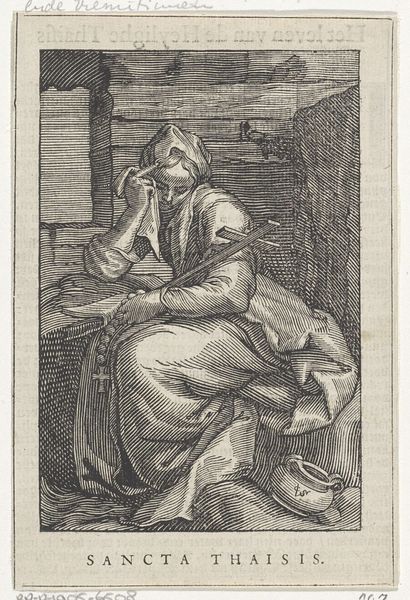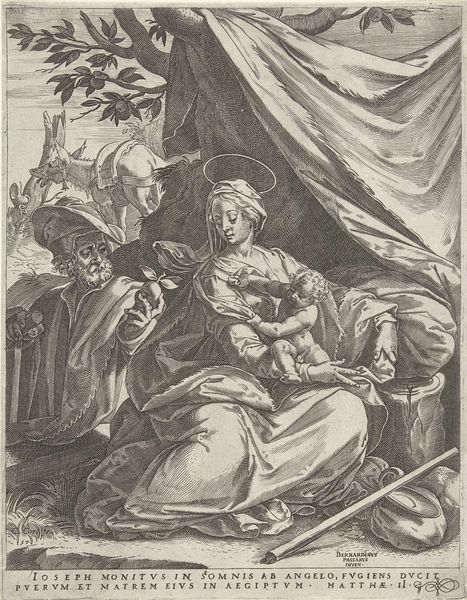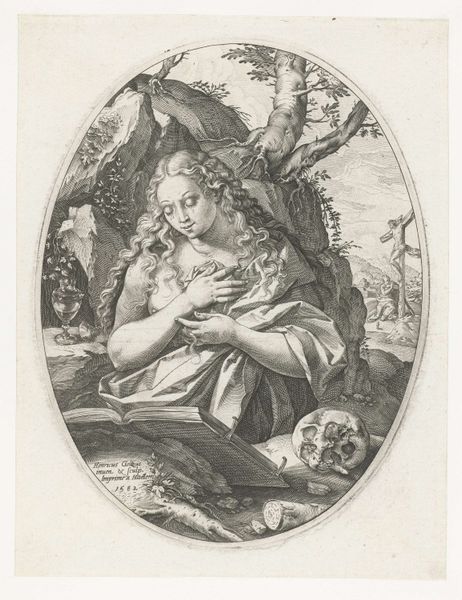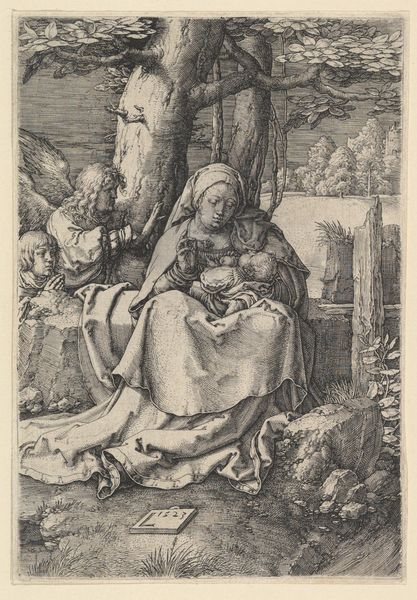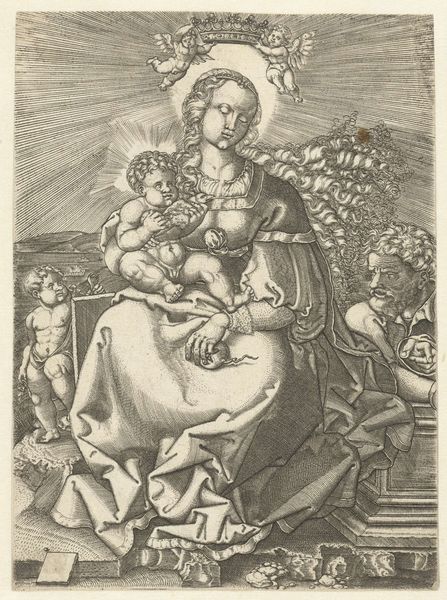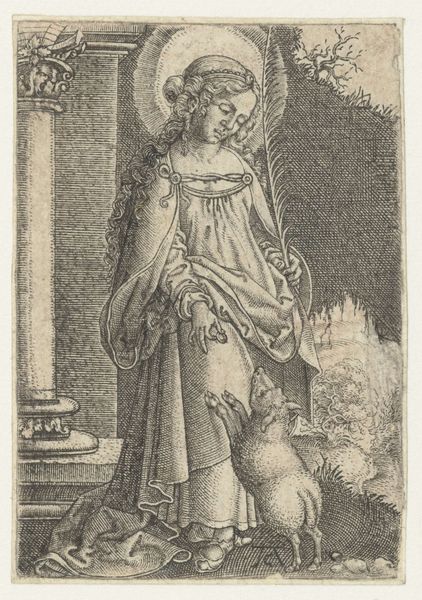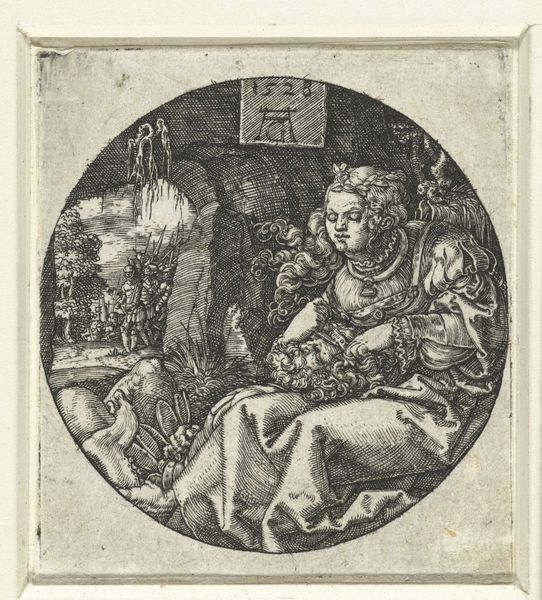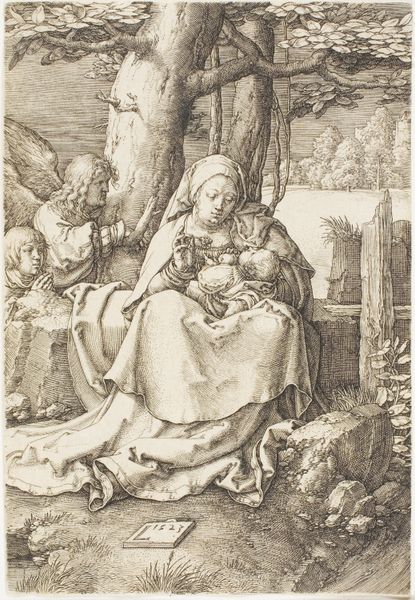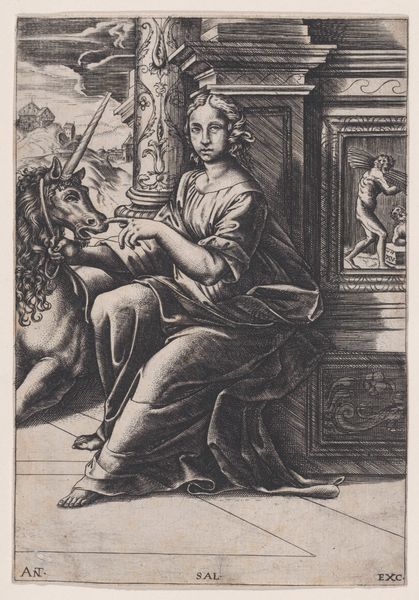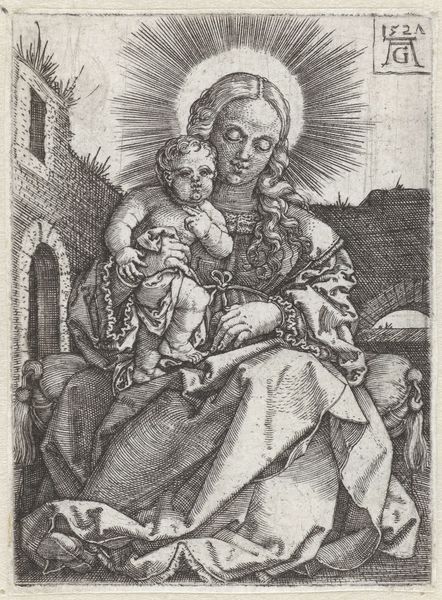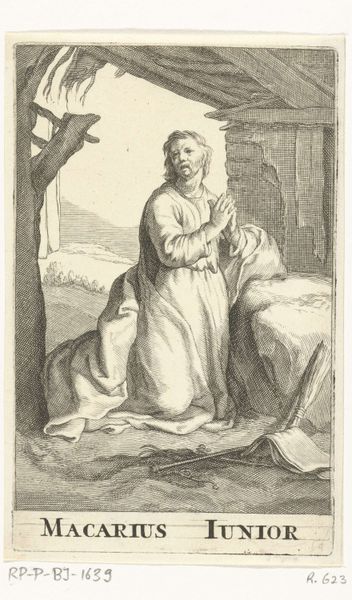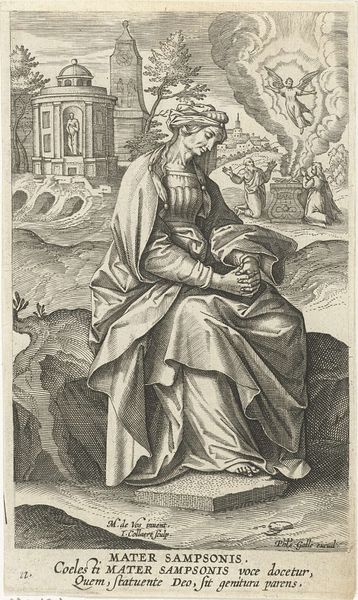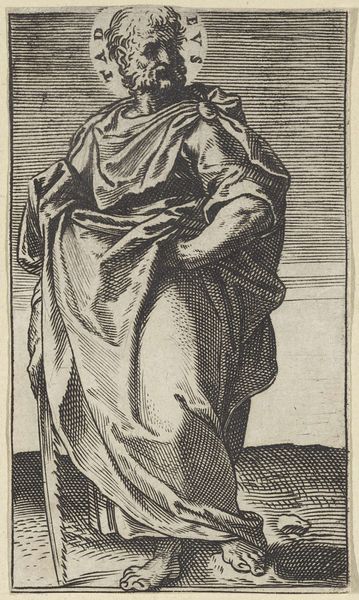
print, engraving
# print
#
landscape
#
figuration
#
italian-renaissance
#
engraving
#
miniature
Dimensions: height 160 mm, width 108 mm
Copyright: Rijks Museum: Open Domain
Editor: This engraving from the Italian Renaissance, created between 1520 and 1530 by Frans Crabbe van Espleghem, depicts the Madonna and Child in a garden. I’m immediately struck by how the cascading folds of fabric contrast with the sharp architectural details in the background. How do you interpret this work? Curator: Considering the material circumstances of its production, it's intriguing how this print, an accessible medium, disseminated religious iconography. What impact might readily available prints have had on artistic patronage and individual devotion during the Renaissance? Did it perhaps challenge traditional notions of artistic authorship or skill? Editor: That’s interesting, I hadn’t thought about how printing changed artistic creation itself. Curator: It did so significantly! The engraving medium suggests mass production. Who was accessing these images, and how might its social function have shifted across different economic strata? Look at the incredible detail; consider the labor involved in creating the plate, in producing the paper, in distributing and potentially even hand-coloring these prints. How would that affect its cultural valuation? Editor: So, by understanding the means of its creation, we understand how its message spread. Was it truly "democratized" in terms of access, or were other social and economic forces at play, still? Curator: Precisely. And looking closely at that finely detailed fabric you initially mentioned, consider the complex trade networks involved in producing and importing such material during this era, too. It makes you rethink what a "miniature" artwork such as this actually represents and the labor and consumption required to enjoy the image. Editor: It's amazing how looking at materials and their availability reshapes the familiar narrative around the artwork itself! Curator: Indeed. By emphasizing the tangible, we can uncover a much more nuanced story of the past.
Comments
No comments
Be the first to comment and join the conversation on the ultimate creative platform.
